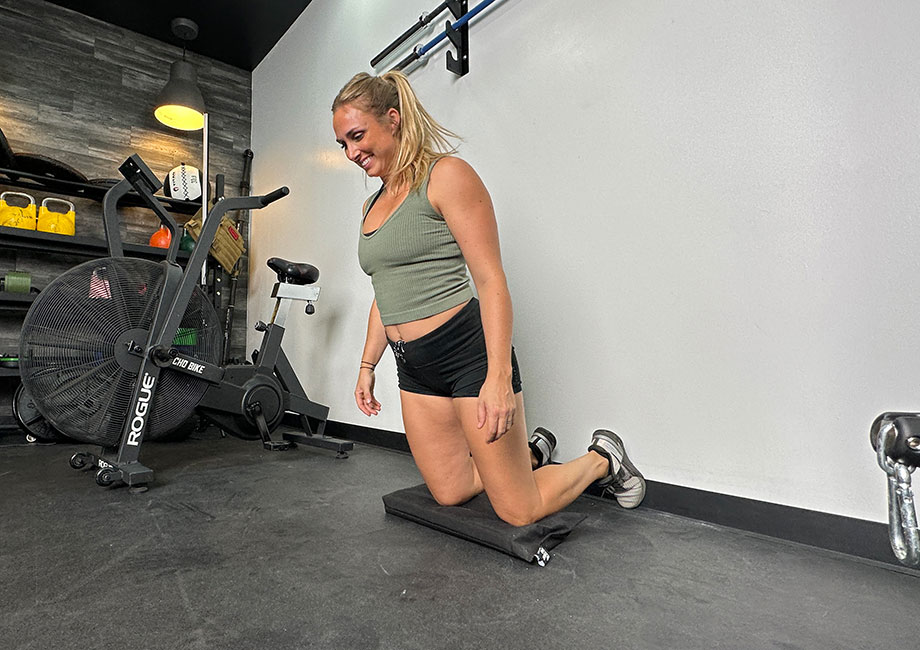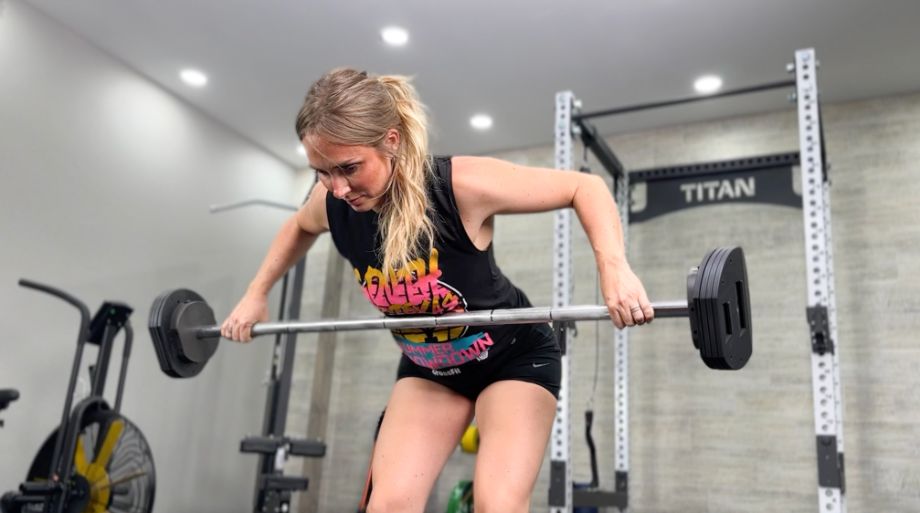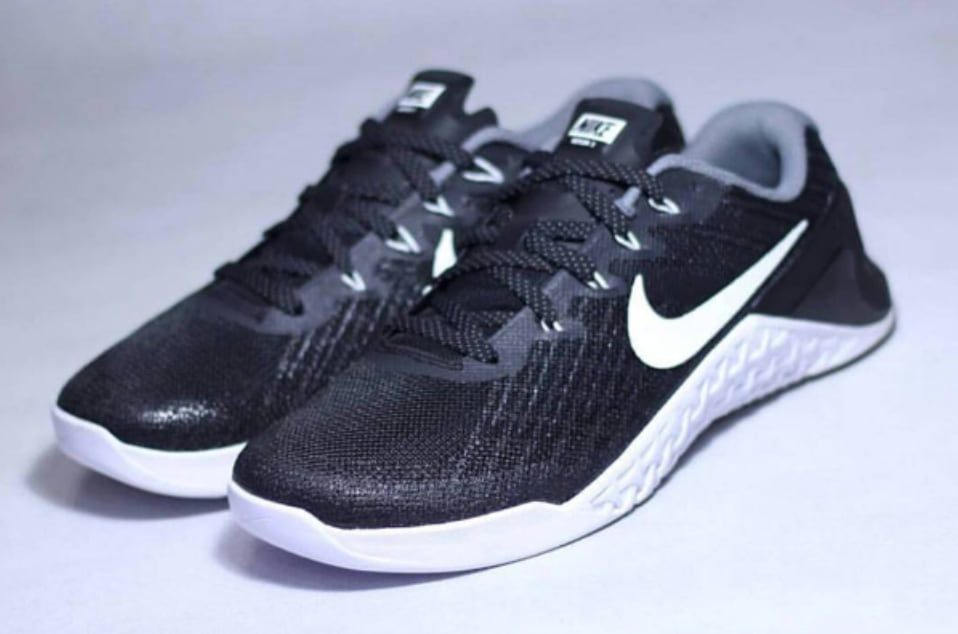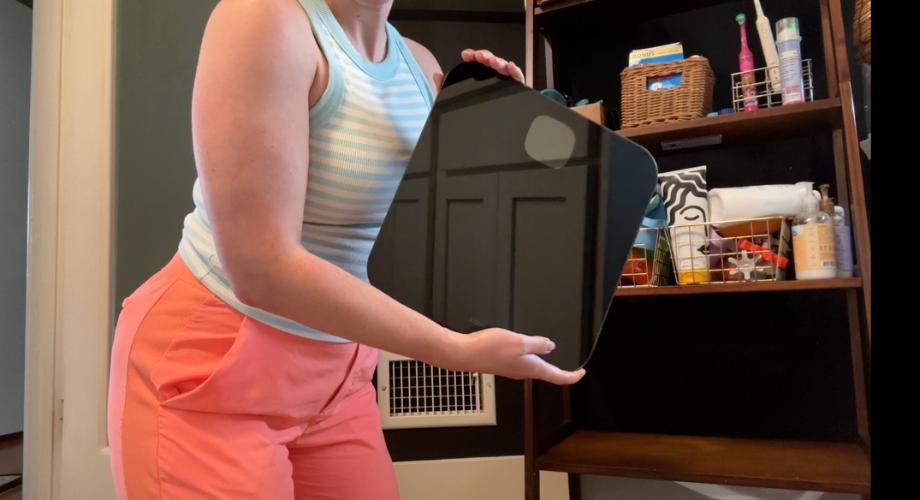When you think about exercise equipment to strengthen the whole body, the first things that probably jump to your mind are barbells, dumbbells, resistance bands, kettlebells, fixed resistance machines, and more.
RELATED: Best Barbell Exercises
Today, I’ll introduce you to something a little closer to home. In fact, you don’t need to spend a cent on equipment because you already have multiple of these. You got it: a wall.
“A wall?! What am I going to do with a wall?” I can almost hear you say. Before you throw a brick at me, hear me out. You can use a plain ol’ wall to get a full-body workout that targets your upper body, lower body, and core. No extra equipment is required.
RELATED: Full-Body Workout At Home
So, how does this work? As a certified personal trainer, I (with an assist from Kate Meier, CPT, USAW-L1, CF-L1, and GGR Head of Content) will start with a step-by-step breakdown of how to do our eight favorite wall exercises. Then, we’ll go into the benefits of wall workouts and why you should consider adding them to your training routine. Put the brick down, and let’s get started!
The Best Wall Exercises for Overall Fitness
Here are the eight best wall exercises for you to try. I consulted with certified personal trainer (CPT), weightlifting and CrossFit coach, and GGR Head of Content, Kate Meier, to get her thoughts:
Wall Sit
Why do it: Not only does the wall sit exercise strengthen the muscles in your lower body, but it also builds mental toughness. “Compared to squats, it’s easier on your lower back, so it could be a good exercise for those experiencing low back pain,” says Kate.
How to do it:
- Stand against a wall with the back of your head, upper back, and lower back touching it. Your feet should be shoulder-width apart and your arms down by your sides.
- Take a step or two forward with your feet.
- Slide down the wall, ensuring your back stays in contact with it. Lower down until your quads are at a 90-degree angle with the floor, keeping your chest upright and core engaged.
- Hold for the desired length of time, then reverse the motion and stand back up.
- Repeat for desired time/repetitions.
Muscles targeted: Quads, hamstrings, glutes, thighs, calves, core
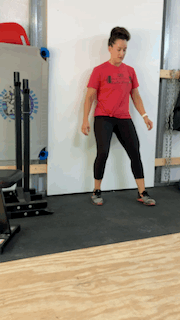
Wall Push-up
Why do it: According to studies1, doing regular push-ups can have adverse effects, including neck pain, back pain, palmar pain, and wrist pain. When you do them against a wall, this can help to alleviate some of this pain. At the same time, you can build strength in your upper body.
How to do it:
- With your feet hip-width apart, stand facing a wall. You should be positioned roughly one arm’s length away from it.
- Reach both arms out and place your palms on the wall, with your fingers facing up.
- Engage your core, then bend your elbows to move closer to the wall. Keep going until your face nearly touches it.
- Pause, then straighten your elbows to return to the starting position.
- Continue for the desired number of reps.
Muscles targeted: Chest, delts, triceps, back, serratus anterior, core
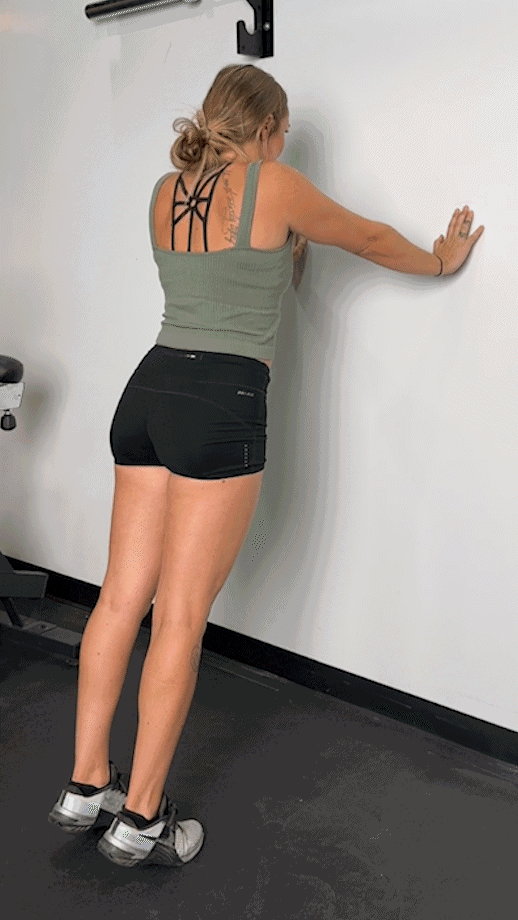
Legs Up the Wall
Why do it: A popular yoga pose, legs up the wall, is a great addition to any wall workout routine because of its well-being benefits. Kate says, “It can relax your mind, alleviate pain in your back and legs, and even help when you’re stressed.”
How to do it:
- Sit down on the floor or an exercise mat, sideways to the wall. Position yourself as close to the wall as possible, with your hands behind you.
- Lean backward, placing your forearms on the floor as you do so.
- At the same time, rotate your upper body away from the wall and place your legs up the wall (hence the name!).
- If needed, adjust so your butt and hips are closer or further away from the wall.
- Place your hands by your side, head on the floor, and hold the position here for as long as you like.
- When finished, bring your knees into your chest, and roll over to either side.
Muscles targeted: Hamstrings, glutes, hip flexors
RELATED: Exercise and Mental Health
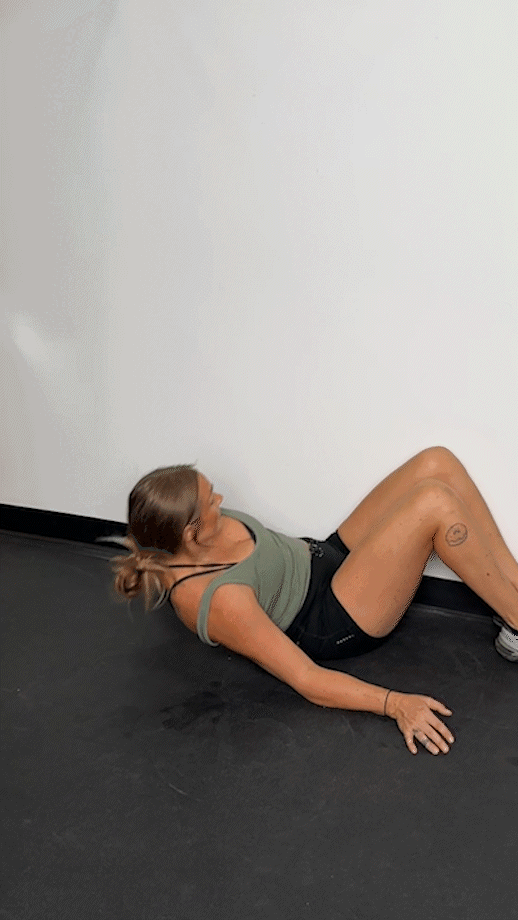
Wall Slide
Why do it: Wall slides can strengthen and increase your shoulders and upper back mobility, which can help with placing objects above your head or other everyday movements.
Additionally, they may effectively reduce pain and improve scapular alignment2, especially in subjects with scapular downward rotation.
How to do it:
- Stand against a wall, with the back of your head, upper back, and lower back touching it.
- Raise your arms and place them against the wall at a 90-degree angle.
- Lift both arms toward the ceiling while driving your glutes and core into the wall. Ensure that your arms, head, upper back, and lower back are touching the wall throughout the movement, and try to lock your elbows at the top (or as far as you can go).
- Hold, then bring the arms to the original position.
- Keep going for repetitions.
Muscles targeted: Shoulders, upper back, serratus anterior
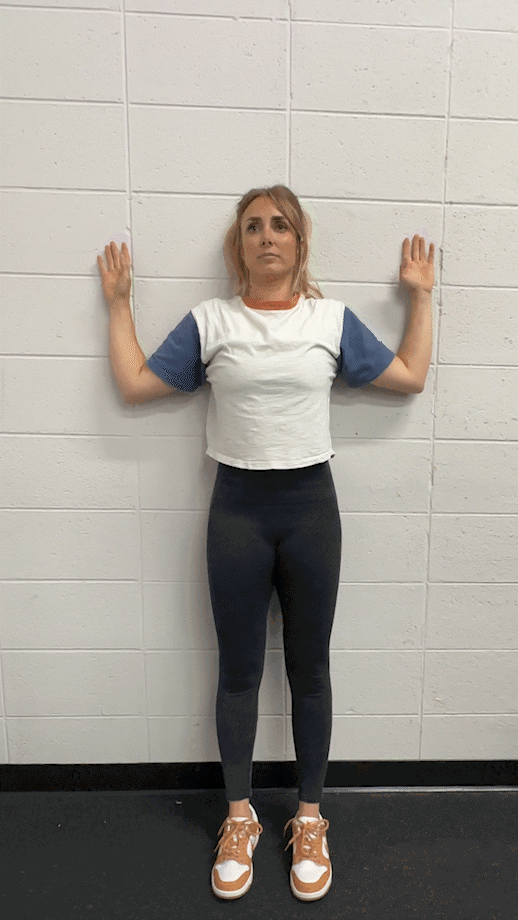
Wall Bridge
Why do it: “Wall glute bridges may help improve your squat form because they strengthen the glutes and improve flexion in the ankle joints,” Kate explains. “If [the movement] gets too easy, try doing it one leg at a time, with one leg on the wall and the other in the air.”
How to do it:
- Lie down on the floor close to a wall. Place your heels on the wall so your legs are at a 90-degree angle.
- If needed, adjust your positioning so you’re comfortable, then place your arms down by your sides.
- Engage your core, squeeze your glutes, then bridge up by lifting your hips.
- Hold at the top, then reverse the motion.
- Continue bridging for reps.
Muscles targeted: Glutes, hamstrings, core, hip flexors
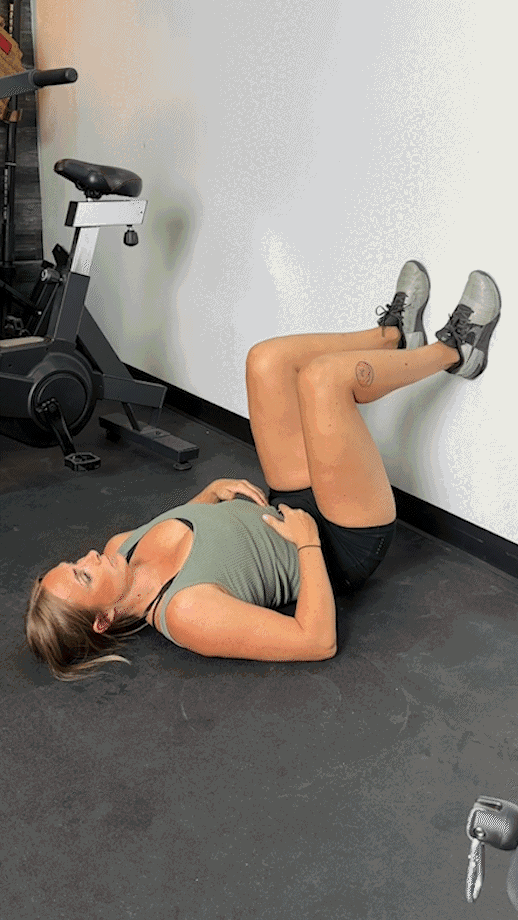
Wall Mountain Climber
Why do it: The wall mountain climber is a low-impact exercise that helps build core strength. You can also bring your feet further away from the wall if you want to make the exercise more difficult.
How to do it:
- Stand upright facing the wall, with your feet slightly wider than shoulder-width apart. Place both palms against the wall, with your fingers facing the ceiling and both arms extended.
- Activate your core, then bring your left knee up toward your left arm.
- Return the left leg back to the floor, then repeat with the right knee.
- Continue for the desired number of repetitions, alternating legs each time.
Muscles targeted: Core, shoulders
RELATED: Best Ab Exercises
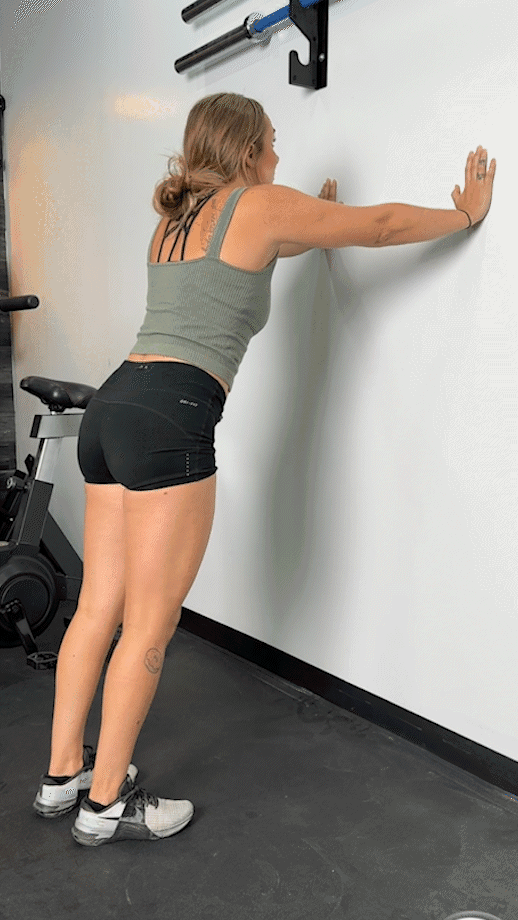
Wall Lunge
Why do it: Lunges are a great bodyweight workout to help sculpt the muscle groups in your lower body. “Lunges require a lot of balance, so placing one hand against a wall helps to keep your whole body stable,” adds Kate.
How to do it:
- Touch a wall with either your left or right hand so you’re facing sideways to it (either hand will do!).
- With your head neutral and chest up, lunge forward with your left leg, keeping your hand firmly against the wall.
- Lower down until your back knee (right knee) is as close as possible to the floor.
- Push through your left heel to return to the starting position. Repeat with the right leg.
- Lunge for repetitions, switching legs each time.
Muscles targeted: Quadriceps, hamstrings, glutes, calves, core
RELATED: Balance Exercises
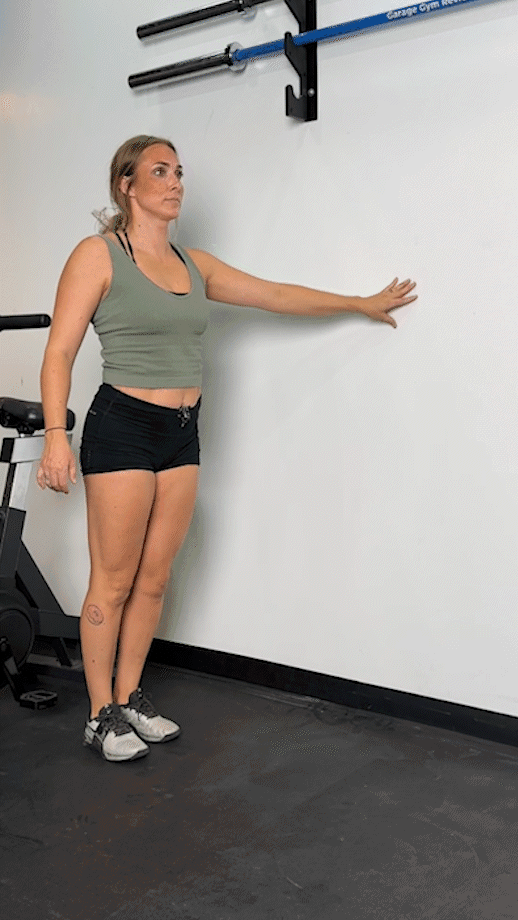
Wall Leg Curl
Why do it: You can strengthen your lower body with no equipment required. Also called the Nordic hamstring curl, this exercise has been shown in Sports Medicine studies to help reduce hamstring injury rates by up to 51%3 in the long term.
How to do it:
- Get onto your knees, facing away from the wall. Push your heels against the wall with your toes touching the floor.
- With your back straight and head neutral, fall down toward the floor. At the same time, put your hands onto the floor so you catch yourself.
- Push through your palms to go back to the original position, using your hamstrings to perform the curling motion.
- Keep going for reps.
Muscles targeted: Hamstrings, glutes, calves
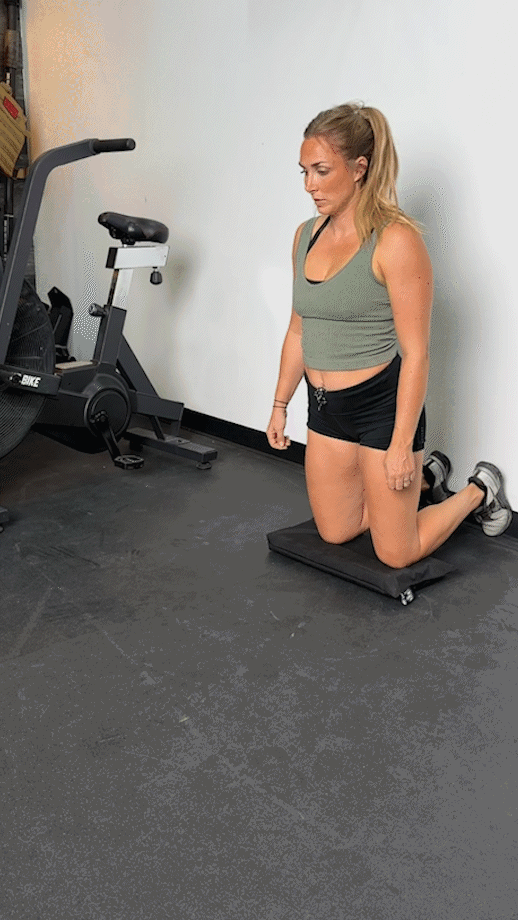
Wall Exercise Benefits
Now you know the best wall exercises for overall fitness, you’re probably thinking, “Why should I do them?” Here are the top benefits:
Works Strength and Stability
Strengthening and stabilizing your muscles can lower the risk of injury, improve flexibility and mobility, support heart health, and more. As you age, this can lead to a better quality of life. There’s no better time than now to start working on this, and wall exercises are a great place to begin.
RELATED: Functional Core Exercises
Can Be Done Anywhere
Whether you’re at home, at the gym, or a friend’s house, walls are everywhere. If you’re traveling, you don’t need to bring anything extra with you. There’s never a time when you can’t exercise. “Some people might want to do wall workouts all the time; others may want to do them when they don’t have access to other equipment,” Kate Meier, CPT, USAW-L1, CF-L1, and GGR Head of Content, says. The choice is yours.
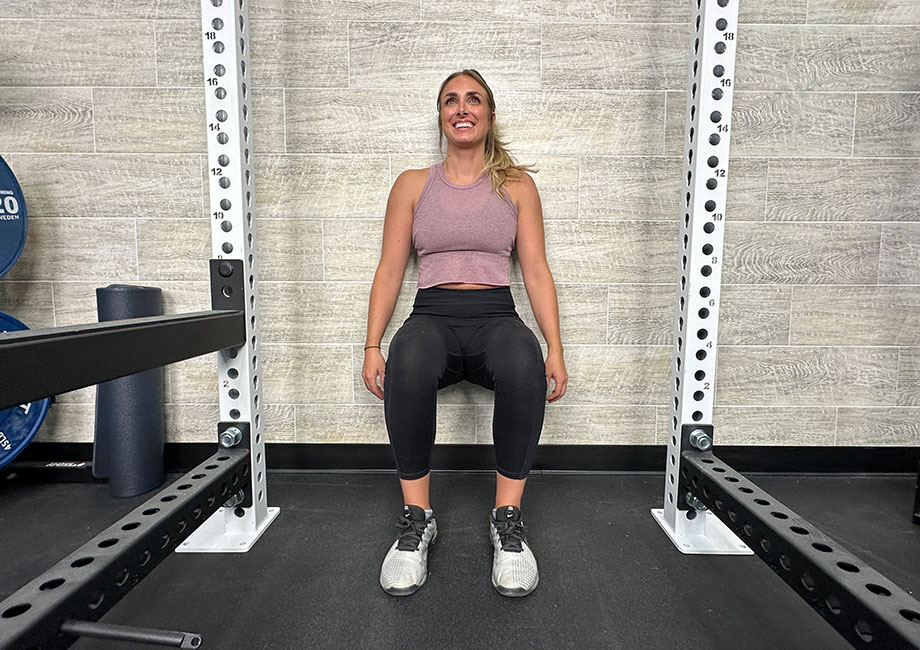
No Special Equipment Needed
Wall exercises require a wall and nothing else. No special equipment is needed, which makes them extremely versatile. While I love training with barbells and dumbbells, they can be inconvenient at times. Sometimes, I want to work out quickly at home, which is when wall exercises are ideal.
RELATED: 8 Time-Saving HIIT Cardio Workouts At Home
Helps Strengthen the Core
While you get specific wall exercises for the core, such as wall mountain climber, other exercises, such as the wall sit, wall push-ups, wall bridge, and more also help you build a stronger core. And what are the benefits of doing so? Improved posture, increased balance, and alleviation of chronic low back pain, according to a 2015 study in the Journal of Physical Therapy Science4.
Wall Exercises: Final Thoughts
If you’re looking to increase your strength and stability no matter your location, consider adding wall exercises to your workout routine. No special equipment is needed, and you can work your whole body, including your upper body, lower body, and core.
To review, here are our eight favorite wall exercises for you to try:
- Wall Sit
- Wall Push-up
- Legs Up the Wall
- Wall Slide
- Wall Bridge
- Wall Mountain Climber
- Wall Lunge
- Wall Leg Curl
Wall Exercises FAQs
Do wall exercises really work?
Yes, wall exercises really do work, especially if you don’t have any additional equipment, such as barbells, dumbbells, or resistance bands. You can build your upper and lower-body strength and stability with wall exercises and your core muscles. The great thing about them is that they can be done anywhere.
RELATED: Best Resistance Bands for Glutes
Does Wall Pilates help lose belly fat?
Wall Pilates can help to lose belly fat and assist with weight loss because it burns calories. However, losing weight is a process of calories in versus calories out, and losing belly fat because you’re exercising isn’t a given.
RELATED: Pilates Workout
Kate Meier, CPT, USAW-L1, CF-L1, and GGR Head of Content, adds, “You’ll need to watch your food intake if losing weight is your goal [and eat] a healthy and balanced diet.”
How do you do wall exercise?
You can work your lower body with exercises such as wall sit, wall lunge, wall bridge, legs up the wall, and wall leg curls. To target your core, do wall mountain climbers. And for your upper body, exercises such as wall push-ups and wall slides can be very effective. All you need is a wall!
How effective are Wall Pilates exercises?
Wall Pilates exercises can be effective, but it depends on your fitness goals. You can add wall exercises to a HIIT home workout, for example. This can help strengthen your muscles while getting the benefits of cardio, too. If your goal is to lift heavy weights on compound exercises, then wall Pilates exercises may not be the best for you.
References
- Chuckpaiwong B, Harnroongroj T. Palmar pressure distribution during push-up exercise. Singapore Med J. 2009 Jul;50(7):702-4. PMID: 19644626.
- Kim TH, Lim JY. The effects of wall slide and sling slide exercises on scapular alignment and pain in subjects with scapular downward rotation. J Phys Ther Sci. 2016 Sep;28(9):2666-2669. doi: 10.1589/jpts.28.2666. Epub 2016 Sep 29. PMID: 27799716; PMCID: PMC5080198.
- Al Attar, W.S.A., Soomro, N., Sinclair, P.J. et al. Effect of Injury Prevention Programs that Include the Nordic Hamstring Exercise on Hamstring Injury Rates in Soccer Players: A Systematic Review and Meta-Analysis. Sports Med 47, 907–916 (2017). https://doi.org/10.1007/s40279-016-0638-2
- Chang WD, Lin HY, Lai PT. Core strength training for patients with chronic low back pain. J Phys Ther Sci. 2015 Mar;27(3):619-22. doi: 10.1589/jpts.27.619. Epub 2015 Mar 31. PMID: 25931693; PMCID: PMC4395677.


